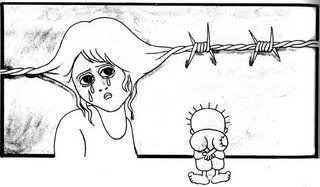
Naji al-Ali was a Palestinian cartoonist born out of the Israeli-Palestinian conflict, his own status being that of a refugee or exile from his own country, which was replaced by Israel. This portion of a biographical summary of Naji al-Ali’s life and work attests to a very prolific output that covered not only the plight of the Palestinians, but the entire Middle East.
As seen above and below, Naji al-Ali’s cartoons often reflect the pathos and loss experienced by the Palestinians living under military occupation in the territories.
Naji al-Ali was one of the most prominent cartoonists in the Arab world. Sarcastic, poignant and perhaps too bold, El Ali’s cartoons were drawn from his experience as a Palestinian refugee since childhood and clearly reflected his political stance. Naji al-Ali had no political affiliations and the absence of slogans and dogma in his work brought both success and criticism.
His cartoons portrayed the bitter struggle and plight of the Palestinian people against Israeli oppression. He also campaigned against the absence of democracy, widespread corruption, and gross inequality in the Arab world. He was said to have antagonized virtually everyone in the Middle East. During his lifetime, he was said to have drawn around 40,000 drawings, on average two cartoons a day. He worked for various publications in the Arab world. He was imprisoned various times for antagonizing political leaders with his critical cartoons. At the end of his life, he lived in exile in London, having been forced to leave Kuwait.
On Wednesday July 22nd, 1987, a lone gunman shot Naji al-Ali in the head as he left his office in London. After five weeks in a coma, he died at 5 AM on Saturday August 30th at the age of 49.
The children of the Intifada, the first one by the resisting Palestinians, inspired many cartoons of Naji Al Ali, most of which could easily apply to the second Intifada after 2000. Children had nothing to do with the suicide bombings during the second Intifada, but the deaths of at least 27 of them and many innocent adults before any bomber entered Israel probably did, as the anger it provoked stimulated the cycles of violence exchanged between the Israeli military and Palestinian militants. Why IDF would kill children is hard to understand, but between 2000 and 2006, eight hundred Palestinian children were killed. Israeli children also died when the cycles of retaliation on both sides led to more and more suicide bombings inside Israel and attacks on Israeli settlers, and even more deadly attacks by the Israeli military, including its air force. In the end, there were five times as many Palestinians killed as Israeli civilians.
Here are a couple of cartoons that reflect the children of the (first) Intifada:
Other cartoons simply reflect the suffering of the Palestinian people under military occupation.
Many more examples of Naji al-Ali’s reflections on Israel’s occupation of the Palestinians may be viewed HERE.

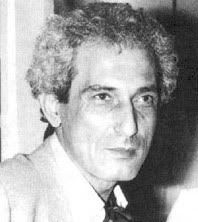
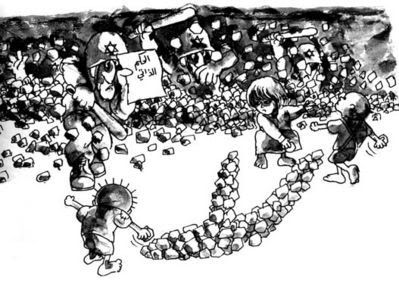
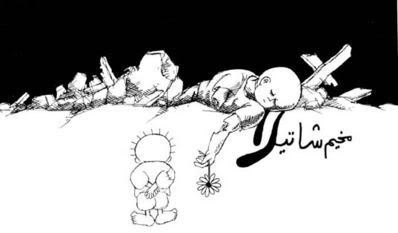
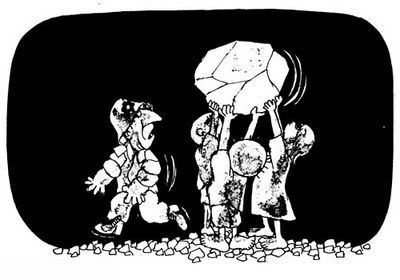
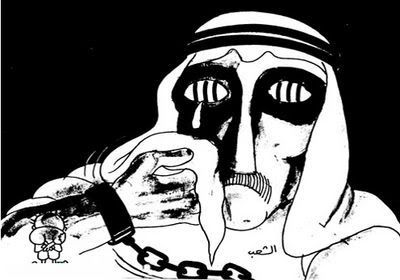






These are very touching images. Thank you shergald. That he was murdered speaks mightily of the power of the pen.
Yes it does. It speak to ordinary people directly.
Who killed him is not something I ever went into. Certainly, every faction, from the Zionists to the any of the authoritarian Arab regimes and kingdoms, did not appreciate his criticism.
.
A friend of Naji al-Ali was quoted saying that he had been warned his life was in danger in a telephone call from a senior member of the PLO in Tunis. The telephone call, two weeks before the murder, came after the publication of a cartoon attacking a female friend of PLO leader Yasser Arafat. “The cartoon was famous in the Arab community,” the friend said. The caller said: “You must correct your attitude.”
“Don’t say anything against the honest people, otherwise we will have business to sort you out,” the caller continued. Naji al-Ali ignored the warning and published a cartoon lampooning Arafat and his henchmen on 24 June 1987.
Naji al-Ali came to London in 1985. He was married and had five children. The editor of Al-Qabas, who was quoted in the London Times said that Naji al-Ali had received more than a hundred death threats over the years. “I don’t know who could be responsible because he has been a critic of so many groups.
See also BBC video …
"But I will not let myself be reduced to silence."I did not think to include Palestinian organizations, but they are eligible culprits too, I suppose.